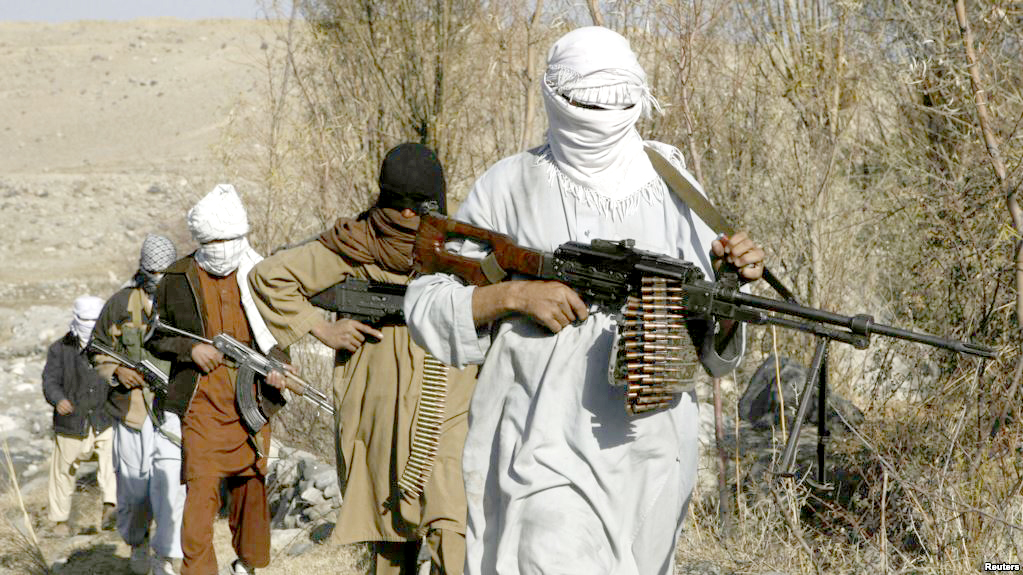BY:Syed Ali Zia Jaffery
Afghan President Ashraf Ghani has offered the Taliban to join the peace process in a bid to save the country. Earlier this month – just weeks after causing carnage and bloodshed in Kabul – the Afghan Taliban implored the US to enter into a dialogue in a bid to end the ruckus and mayhem in Afghanistan.
In an open letter to the “American people” and “peace-loving congressmen”, the Taliban asserted that: “if the policy of using force is continued for another one hundred years, the outcome will be the same…as you have observed over the last six months since the initiation of Trump’s new strategy.”
This overture is aimed at convincing the US to give up its military-heavy Afghan strategy that has been incessantly followed by the Trump administration. The Taliban – through this letter, previous enunciations and brazen attacks – has highlighted one hallmark of the Afghan war: the more military power the US will apply, the more ferocious the Taliban will become. However, there are many reasons to believe that Washington will not take this letter positively.
Taken together, the new National Security Strategy’s plan of action for Afghanistan and the South Asia policy are much in-line with the concept of war-fighting that the US has adopted since the initiation of Operation Enduring Freedom. The central idea of last year’s South Asia policy is to militarily defeat the Taliban and weaken them to an extent that they have no choice but to come to the negotiation table.
The approach has manifested itself by a threefold increase in the use of airpower against the Taliban in 2017. Moreover, the 68-page NSS states that: “we will bolster the fighting strength of the Afghan security forces to convince the Taliban that they cannot win on the battlefield and to set the conditions for diplomatic initiatives to achieve enduring peace”. While continuing to apply military power disproportionately, America’s strategic planners have conveniently ignored that the Taliban will not cease to fight till the US does the same.
One theme that permeates in both the NSS and the South Asia policy is the conviction that military power can coerce the Taliban despite evidence that suggests the opposite. However, if lessons from the past did not compel the US to give up its efforts to chase an abstract military victory, the Taliban targeting civilians in the recent bloodbath in Kabul will not cajole the US to end its military operations. More importantly, the America’s belief emanates from their age-old war-fighting concept.
Operations like aerial campaigns from land-based B1, B2 and B52 bombers certainly have a telling impact in conventional wars, but are ineffective against insurgents since they elicit strength from changing locations and tactics. With its leadership intact, the Taliban recuperated and emerged as a stronger force. As things stand today, the Taliban pose the greatest challenge for the US and Afghan forces.
The US can ideally also cooperate with Islamabad and China to influence the Taliban to begin a dialogue. In addition, Russia’s willingness to broker a deal with the Taliban should be welcomed by the US. Russia and the US consider Isis, which is operating in Afghanistan, to be a common enemy. However, the US cannot take this route. Its ties with Pakistan are rupturing thick and fast. There is intense bickering between both countries over the safe havens of terrorists. Both sides have repeatedly alleged that the other is not doing enough to secure the Afghan border.
If the laudatory references to India in Trump’s August 21 speech did not vitiate relations between both countries, the statement of support for India in the NSS certainly did. The NSS states that:” we will deepen our strategic partnership with India and support its leadership role in Indian Ocean security and throughout the broader region”. If anything, America’s efforts to bolster India in Afghanistan will evoke Pakistan’s post-1971 security paradigm, making it doubly difficult for the US to gain its cooperation. As of now, the trust-deficit between Washington and Islamabad is an impediment to a concerted conciliatory effort in Afghanistan.
Beijing and Moscow have also stressed on the need to find a political solution to the simmering Afghan quagmire. The latter has been on the forefront in convincing all stakeholders in talking with the Taliban, ostensibly in a bid to counter the proliferation of the Isis-K in the country.
However, this is not how the US sees Moscow’s ingress in Afghanistan. Washington has accused Moscow of arming the Taliban in order to increase its clout in Afghanistan. Beijing has, over the years, not only strengthened its bilateral relations with Afghanistan but has also actively engaged in multilateral forums in order to bring about a peace settlement in the country. China’s burgeoning trade and investment drives in Afghanistan are now being followed by plans to build a military base in Afghanistan’s Badakhshan province in a bid to revive the ancient Silk Road under the aegis of its One Belt One Road (OBOR) initiative.
At a time when the US is finding it difficult to grapple with Taliban’s blitz across the country, it would not find it tenable to allow Russia and China to achieve a tactical diplomatic victory by entering into a dialogue with the Taliban. The new US National Defence Strategy has outlined strategic competition from an ever-expanding China and a resurgent Russia as the main threat to the US. The NDS puts on paper America’s concerns regarding China’s predatory economics and military modernisation aimed at reordering the power equilibrium in its favour. The US is also perturbed and sceptical about Russia’s economic and diplomatic decisions taken to shake the sinews of Nato.
It is, therefore, quite reasonable to assert that – despite the pitfalls of a military-heavy Afghan war-effort – it requires a veritable shift in America’s strategic thinking, its ties with Pakistan and, most importantly, a guarantee that Taliban will renounce violence for talks to take place. However, one thing is a given: the application of military power is an anathema to peace in Afghanistan.
The writer is a research associate the Center for Security, Strategy and Policy Research (CSSPR), University of Lahore.



